
Wind tunnel and insulation test facility.
Behind the auralization instrument is a stand-alone browser that synthesizes the various sounds of an overall noise situation in real time.
more info
Wind tunnel and insulation test facility.
Behind the auralization instrument is a stand-alone browser that synthesizes the various sounds of an overall noise situation in real time.
more info
Water-saturated foot of a wall made from porous clay blocks with integrated insulation after an experiment to simulate water damage.
Analysed were floor structures with screed and EPS insulation layers as well as the three adjoining walls in brick construction with thermally insulated chambers.
more infoResearch and development highlights

Thanks to the laboratory “High Performance Indoor Environment (HiPIE)”, building physics environmental conditions can be specifically controlled.
Larger open workspaces are becoming increasingly common. However, open plan offices require detailed integral planning in order to achieve good working conditions in the rooms.
more info
Process of acoustic product design.
Acoustic design or sound design is established in numerous branches of industry as an integral part of product development.
more info
Especially in the case of buildings in lightweight construction, e.g. with a supporting structure made of wood, the subject of impact sound is of high relevance.
If, in particular, the footfall sound of wooden ceilings is insufficiently insulated, listening in is unavoidable and every step of the neighbour is disturbing.
more info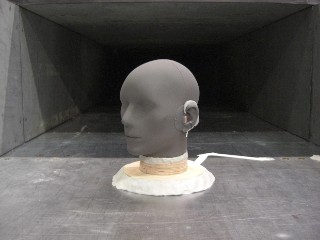
Artificial head in wind tunnel.
How do wind speed and wind angle of incidence affect the ear and the hearing aid? The Fraunhofer IBP has tested hearing aids in a wind tunnel.
more info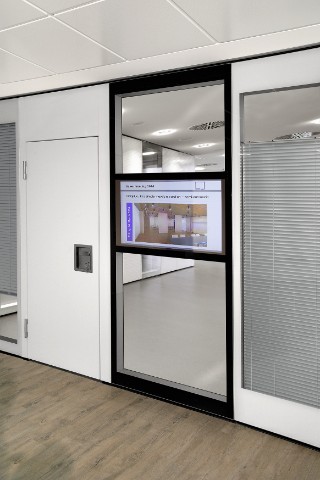
Monitor integrated into the transparent element of a mobile partition wall.
With their many functions, movable partitions open up new possibilities for variable room use and attractive room design.
more info
Cylindrical granules for the production of sound-absorbing model substances.
If the acoustic design of the microstructure of granular sound absorbers is carried out specifically, more efficient materials than usual can be constructed.
more infoHighlights from research and development

Winter night with a temperature of -15°C.
The Hygrothermics Department carried out a serviceability check for an innovative facade construction in Ankara.
more info
Fig. 1: Water infiltrating a wall after simulation of water damage.
The laboratories and the knowledge of the Fraunhofer IBP regarding building drying offer the possibility to test the drying and component variations.
more info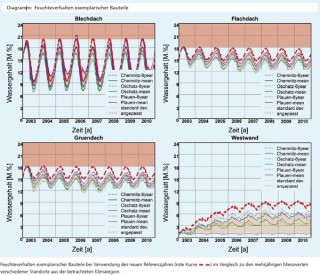
Hygrothermal behavior of typical components using the new reference year (red line) as compared to multi-year measurements at different locations within the observed climate region.
The aim of the project is to create a resilient and reliable climate data basis for component simulation.
more info
Air permeability tests on a cleanroom ceiling. The ceiling panels are installed in the test box and connected to the test bench.
On behalf of industry, the air-tightness of suspended ceiling constructions especially for clean rooms was investigated for the first time.
more info
Prototype paving stones as green bodies - straight after the molding process at the factory.
In the project, a water reservoir is integrated into a paving stone, which transports water at high temperatures to the surface and cools it down.
more info
With the help of hygrothermal simulations, it is possible to predict long-term moisture conditions in inverted roof insulation under known conditions.
more info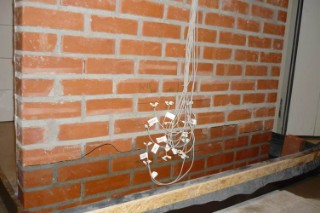
Infiltration of water from above into a tiled section of an aerated concrete wall.
The results show large differences in the drying behaviour of masonry blocks. The biggest effect on drying is the application of plaster.
more info
The cloud system of the indoor climate analysis platform VALEA.
The scientists of the Department of Hygrothermics developed a methodology that evaluates the measured indoor climate and protects the user as well as the building fabric from damage.
more info
Simulated moisture content in the timber frame of a flat roof in Chemnitz over a period of 8 years, based on real measurement data (violet), the average year (green), and a combination of three average years, two critical years (red band) and three further average years (blue).
In the project, the Fraunhofer IBP created new hygrothermal reference years that represent temperature, radiation, humidity and precipitation.
more info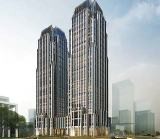
The 148 meter-high office towers of the “Sino-German Industrial Service Platform” planned in Foshan.
The Fraunhofer IBP received an accompanying research contract worth one million euros from the Chinese urban development company of "Foshan New City".
more infoIn the textile industry there is a wide range of high-tech products that can also offer solutions for building physics issues.
more info
Measured fluctuations in surface temperature.
A promising way to reduce the amount of condensation on facade surfaces is the use of "IR coatings" (IR = infrared).
more info